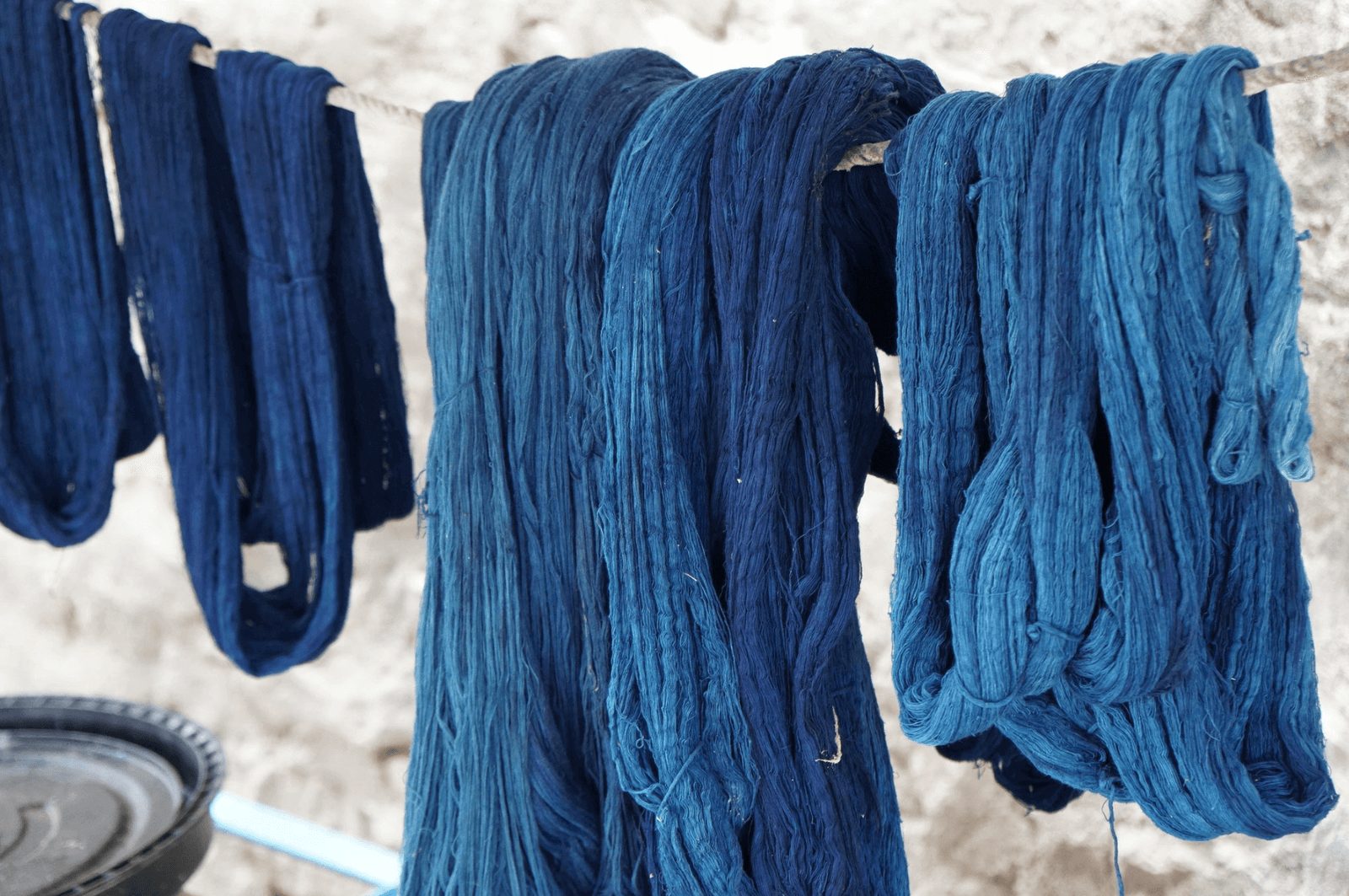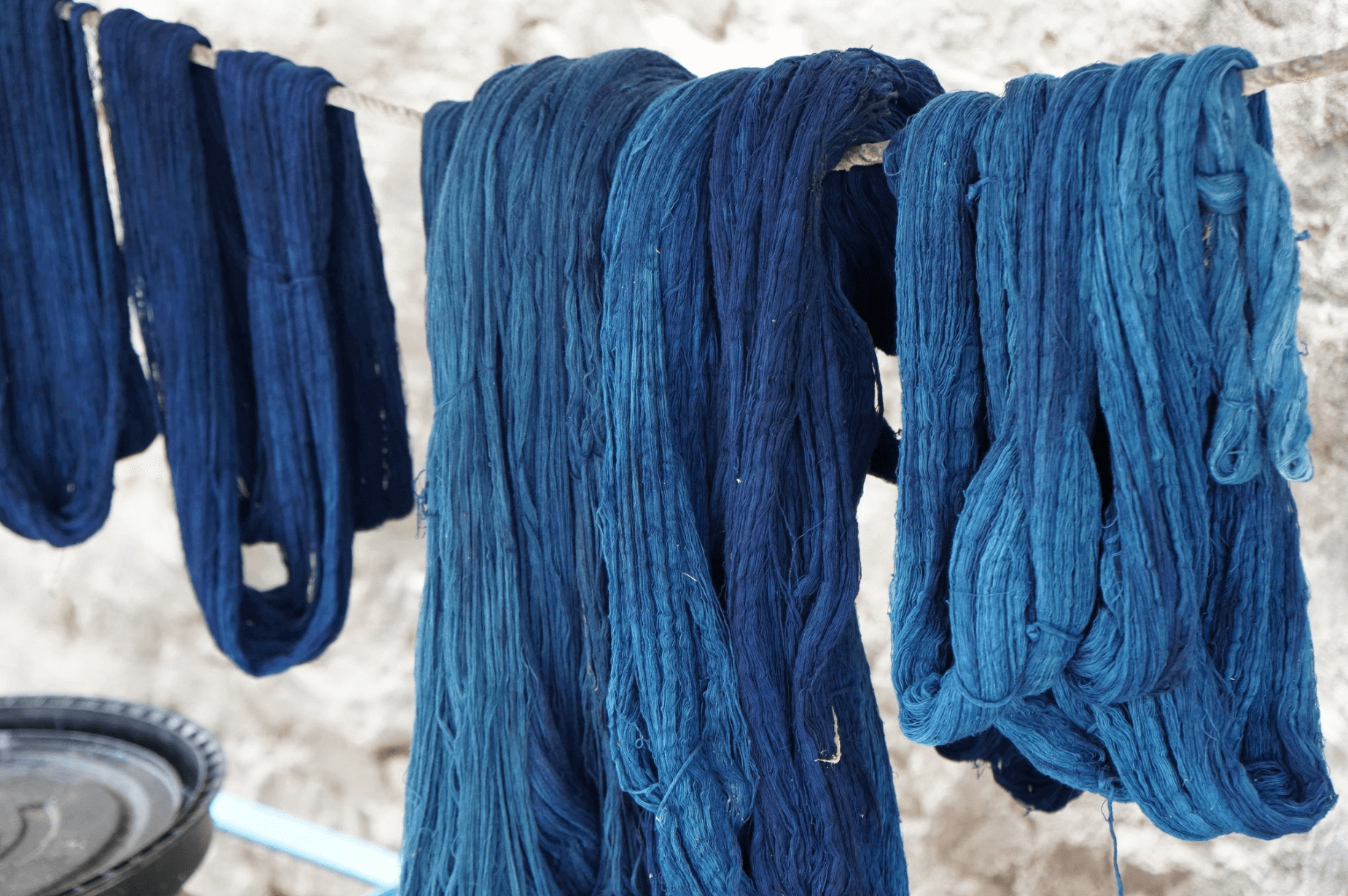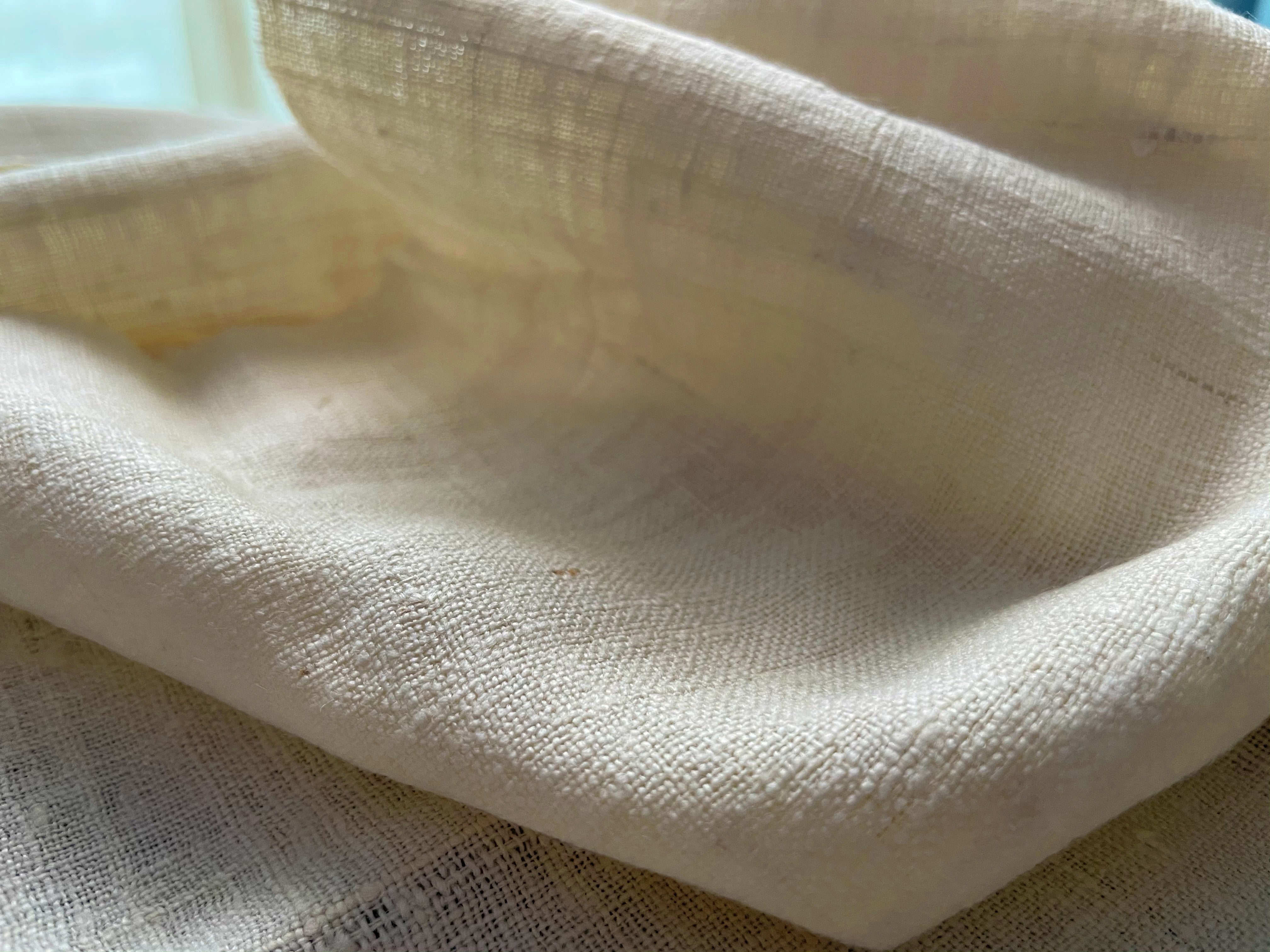3 Facts About Indigo You Didn't Know

Once upon a time, dyes ruled the world. Okay, not literally. But dyes and textiles did play a major role in international trade and economics. And one of the most vital dyes was the color indigo. In fact, traders once referred to it as Blue Gold because it was considered such a commodity.
We have been associated with natural dyes since the very beginning - especially indigo. An ancient pigment, it is created through the process of turning leaves from the Indigofera plant into powder, boiling the powder down into a rich liquid, and then fermenting the dye until it can provide its distinctive blue colour.

Read on to learn three fascinating facts about the history of this beautiful blue hue.
-
Indigo is a living dye
Unlike synthetic pigments or dyes, plant-based indigo dyeing uses indigo leaves that are harvested in the late summer months. The plants undergo a fermentation process in large vats, bubbling up and appearing to breathe. Bubbles on the surface indicate a good-quality indigo. This is why many artisans say that their indigo is alive.
-
Indigo dye is not blue
Even though you may know indigo as a richly blue color, indigo dye is first green and gradually turns blue when it comes in contact with air. Once the indigo brew turns a bright jade green, artisans know it’s ready for dyeing. The transformation is a magical process, the result of the harmony between the air, temperature, humidity, and the plant itself. Each time, the colour is wholly unique, providing a transformation of green to blue that still remains a captivating mystery with each batch.
-
Indigo shade depends on the plant
Each Indigofera plant develops its own shade of colour – one variety can be vastly different from another. For example, the Assam indigo plants native to Northeast India, known as Rom, are unique from other varieties of indigo because they yield a darker, solid blue. They have a little more green, making it a deep and intense tone. According to local folklore, the Rom leaf is beloved not only for its beautiful regal blue but also for its ability to ward off snakes and insects.
Each dye work is an intricate process and a labour of love. Infused within this exquisite shade of indigo blue is generations of knowledge as well as time-honoured practice and years of experience by each artisan.




